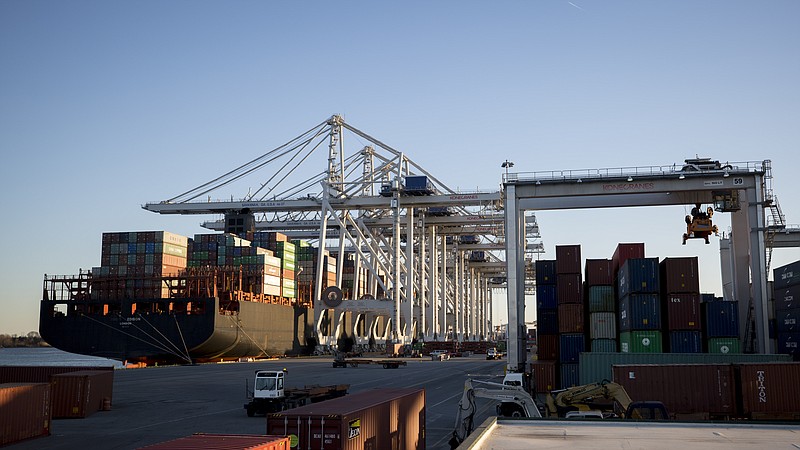WASHINGTON - Record exports shaved the U.S. trade deficit in April for the second straight month. But so far this year, the deficit is up 11.5 percent from a year ago despite President Donald Trump's vow to close the gap through new tariffs on imports and renegotiated trade deals.
The Commerce Department said Wednesday that the trade deficit dropped to $46.2 billion in April, down from $47.2 billion in March and lowest since September. Exports edged up 0.3 percent to a record $211.2 billion; imports dipped 0.2 percent to $257.4 billion.
The United States ran a $68.3 billion deficit in the trade of goods. That was partly offset by a $22.1 billion surplus in trade of services such as tourism and banking.
The trade deficit in goods with China widened 8.1 percent to $28 billion in April; the monthly gap with Mexico narrowed 29.8 percent to $5.7 billion.
Trump campaigned on a promise to bring down the U.S. trade deficit - the difference between what America sells foreign countries and what it buys from them.
The president has focused much of his ire on China and Mexico.
He has proposed tariffs on up to $150 billion in Chinese imports to punish Beijing for forcing American companies to share technology in exchange for access to China's market. The Chinese have targeted $50 billion in U.S. products in retaliation. Talks to head off a trade war between the world's two largest economies have so far failed to produce a resolution even though China has offered to step up purchases of U.S. farm and energy products.
Trump also is trying to renegotiate the North American Free Trade Agreement with Canada and Mexico in an effort to shift more investment and auto production to the United States and away from Mexico. Those three-country talks have also stalled. And the White House has signaled that it hopes to negotiate with its two neighbors separately.
The administration also is taxing imports of steel and aluminum, saying that reliance on foreign metals poses a threat to U.S. national security - a position that has enraged U.S. allies including the European Union, Japan, Canada and Mexico.
The president views trade deficits as a sign of economic weakness that can be brought down by more aggressive trade policies. Most economists say they are caused by bigger economic forces, mainly the fact that the United States consistently spends more than it produces.
The trade gap has continued to rise since Trump entered the White House partly because the U.S. economy is strong and American consumers have an appetite for imported products and the confidence and financial wherewithal to buy them.
Through April, the trade deficit in goods and services with the rest of the world has risen to $201.8 billion from $181 billion the first four months of 2017.
So far this year, the deficit in goods trade with China is up 11.7 percent. And despite the decrease in April, the gap in goods trade with Mexico is up 4.8 percent so far this year.
"The trade deficit has worsened considerably since President Trump took office," said Lori Wallach, director of Public Citizen's Global Trade Watch and a critic of U.S. trade policy. She added: "If Trump is serious about reducing our trade deficit, then he must stay focused on changing China's unfair trade practices, not settle for the usual Chinese promises to buy more U.S. exports." Wallach also said NAFTA needs a major overhaul.
